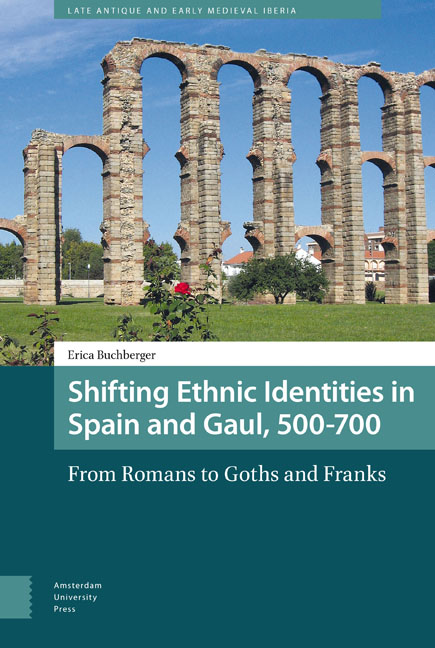Refine search
Actions for selected content:
23990 results in Ancient history
Athens: An Introduction
-
-
- Book:
- The Cambridge Companion to Ancient Athens
- Published online:
- 10 March 2021
- Print publication:
- 18 February 2021, pp 1-6
-
- Chapter
- Export citation
Part I - The Urban Fabric
-
- Book:
- The Cambridge Companion to Ancient Athens
- Published online:
- 10 March 2021
- Print publication:
- 18 February 2021, pp 19-156
-
- Chapter
- Export citation
Chapter 4 - The Scale of Benefaction
- from Part II - Classical Benefactors
-
-
- Book:
- Benefactors and the Polis
- Published online:
- 21 January 2021
- Print publication:
- 18 February 2021, pp 96-112
-
- Chapter
- Export citation
Contributors
-
- Book:
- Benefactors and the Polis
- Published online:
- 21 January 2021
- Print publication:
- 18 February 2021, pp ix-xi
-
- Chapter
- Export citation
Part V - Politics
-
- Book:
- The Cambridge Companion to Ancient Athens
- Published online:
- 10 March 2021
- Print publication:
- 18 February 2021, pp 377-418
-
- Chapter
- Export citation
15 - Labor and Employment
- from Part III - Business/Commerce
-
-
- Book:
- The Cambridge Companion to Ancient Athens
- Published online:
- 10 March 2021
- Print publication:
- 18 February 2021, pp 217-230
-
- Chapter
- Export citation
Abbreviations
-
- Book:
- The Cambridge Companion to Ancient Athens
- Published online:
- 10 March 2021
- Print publication:
- 18 February 2021, pp x-x
-
- Chapter
- Export citation
Part V - The Decline and Fall of Euergetism?
-
- Book:
- Benefactors and the Polis
- Published online:
- 21 January 2021
- Print publication:
- 18 February 2021, pp 265-329
-
- Chapter
- Export citation
2 - Asty and Chora: City and Countryside
- from Part I - The Urban Fabric
-
-
- Book:
- The Cambridge Companion to Ancient Athens
- Published online:
- 10 March 2021
- Print publication:
- 18 February 2021, pp 21-34
-
- Chapter
- Export citation

Shifting Ethnic Identities in Spain and Gaul, 500–700
- From Romans to Goths and Franks
-
- Published by:
- Amsterdam University Press
- Published online:
- 12 February 2021
- Print publication:
- 28 February 2017
-
- Book
- Export citation
Chapter 3 - Private Associations and Urban Experience in the Han and Roman Empires
- from Part I - Authority and Lifestyles of Distinction
-
-
- Book:
- Rulers and Ruled in Ancient Greece, Rome, and China
- Published online:
- 19 January 2021
- Print publication:
- 04 February 2021, pp 102-130
-
- Chapter
- Export citation
Part I - Authority and Lifestyles of Distinction
-
- Book:
- Rulers and Ruled in Ancient Greece, Rome, and China
- Published online:
- 19 January 2021
- Print publication:
- 04 February 2021, pp 23-130
-
- Chapter
- Export citation
Chapter 8 - Augustus, the Roman Plebs and the Dictatorship
- from Part III - Inversions of the People: Emperors and Tyrants
-
-
- Book:
- Rulers and Ruled in Ancient Greece, Rome, and China
- Published online:
- 19 January 2021
- Print publication:
- 04 February 2021, pp 269-299
-
- Chapter
- Export citation
Part II - The People as Agents and Addressees
-
- Book:
- Rulers and Ruled in Ancient Greece, Rome, and China
- Published online:
- 19 January 2021
- Print publication:
- 04 February 2021, pp 131-266
-
- Chapter
- Export citation
Part III - Inversions of the People: Emperors and Tyrants
-
- Book:
- Rulers and Ruled in Ancient Greece, Rome, and China
- Published online:
- 19 January 2021
- Print publication:
- 04 February 2021, pp 267-396
-
- Chapter
- Export citation
Maps
-
- Book:
- Rulers and Ruled in Ancient Greece, Rome, and China
- Published online:
- 19 January 2021
- Print publication:
- 04 February 2021, pp ix-ix
-
- Chapter
- Export citation
The Many Faces of “the People” in the Ancient World
-
-
- Book:
- Rulers and Ruled in Ancient Greece, Rome, and China
- Published online:
- 19 January 2021
- Print publication:
- 04 February 2021, pp 1-22
-
- Chapter
- Export citation
Chapter 6 - Registers of “the People” in Greece, Rome, and China
- from Part II - The People as Agents and Addressees
-
-
- Book:
- Rulers and Ruled in Ancient Greece, Rome, and China
- Published online:
- 19 January 2021
- Print publication:
- 04 February 2021, pp 193-224
-
- Chapter
- Export citation
Figures
-
- Book:
- Rulers and Ruled in Ancient Greece, Rome, and China
- Published online:
- 19 January 2021
- Print publication:
- 04 February 2021, pp vii-vii
-
- Chapter
- Export citation
Chapter 5 - Female Commoners and the Law in Early Imperial China
- from Part II - The People as Agents and Addressees
-
-
- Book:
- Rulers and Ruled in Ancient Greece, Rome, and China
- Published online:
- 19 January 2021
- Print publication:
- 04 February 2021, pp 156-192
-
- Chapter
- Export citation
